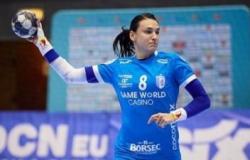Scientists at the University of Colorado Boulder have launched an ambitious research project with a revolutionary goal: to cure osteoarthritis within five years. The team, funded by the Advanced Research Projects Agency for Health (ARPA-H) with up to $39 million, aims to develop non-invasive therapies to end this painful and debilitating condition.
By combining expertise in engineering, gene therapy and biomimetic materials, researchers aim to create self-healing joints that could completely change the outlook on osteoarthritis treatment.
Osteoarthritis, what is it?
Osteoarthritis affects about one in six people over the age of 30 worldwide. As the population ages and becomes more sedentary, these numbers are expected to rise. The disease causes destruction of the cartilage that cushions the joints, resulting in painful rubbing of the bones. Over time, bones deteriorate and become misshapen.
Currently, treatment options are limited to pain management and, when that is no longer sufficient, joint replacement surgery. There is no cure. But the Colorado research team, armed with up to $39 million in funding from the Advanced Research Projects Agency for Health (ARPA-H), is determined to change that.
“Within five years, our goal is to develop a suite of non-invasive therapies that can end osteoarthritis,” said project leader Stephanie Bryant, PhD, a professor at CU Boulder, according to Study Finds.
Dual approach
The team’s approach is twofold: addressing both the biological and structural problems that characterize osteoarthritis. On the biological front, co-investigator Michael Zuscik, PhD, a professor at the Anschutz Medical Campus, spent 15 years developing and testing a drug that encourages cartilage and bone cells to produce the proteins needed to rebuild themselves.
Enter Bryant, a materials specialist who has spent more than two decades developing three-dimensional, gelatinous biomaterials that can slip into the cracks of damaged cartilage and bone, providing a supportive framework for the body’s own cells to migrate and repair tissue—like and beams of a new building.
Meanwhile, CSU scientists have developed gene therapy techniques to control inflammation and speed cartilage healing.
See also: The mistake that leads to premature aging. Dr. Dana Miricioiu: The face will wrinkle much deeper and faster
The pieces put together
Now, with ARPA-H funding, the team can finally bring these pieces together. Their engineering challenge is to develop methods to deliver these regenerative therapies to the body in a way that provides lasting benefits and can treat multiple joints at once, if necessary.
The solution consists of nanoparticles that can be administered intravenously, serving as tiny Trojan horses that migrate to inflamed joints and deliver a healing cocktail that allows the body to repair itself.
See also: Cancer that is discovered by chance. Dr. Ruxandra Dobrescu: It is the most common. It progresses slowly
The team’s ultimate goal is to commercialize three innovations: a single healing injection that can stop joint damage and jump-start regeneration; a wound patching hydrogel for more advanced cases; and an annual infusion for the systemic treatment of osteoarthritis throughout the body.
Osteoarthritis – PHOTO: Freepik@kjpargeter
When it’s time for studies, co-investigator Laurie Goodrich, DVM PhD, a veterinary clinician scientist at CSU, will lead the animal studies.
“CSU’s expertise in veterinary medicine will play a crucial role in helping this science move to the next step,” says Goodrich.
Within 3.5 years, the team hopes to begin conducting trials in human patients. However, developing these treatments is only half the battle, according to co-investigator Karin Payne, PhD, associate professor at CU Anschutz.
Stay up to date with the latest news. Follow DCMedical on Google News as well
Did this article help you?
Follow the DCMedical Facebook page and the DCMedical Health Dose Instagram page and access more useful content for your health, disease prevention and treatment, first aid measures and useful advice from doctors and patients.
Tags: Osteoarthritis cured Therapy body repair
-





